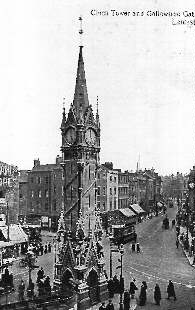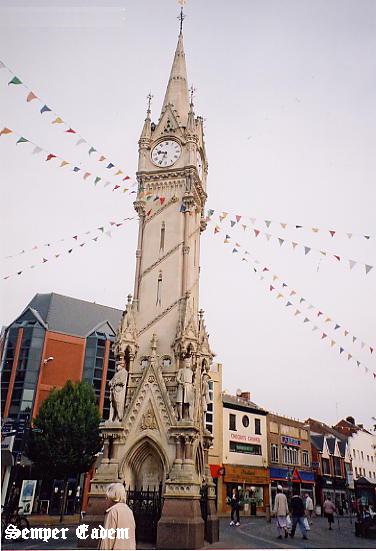
|
|
In the 1860s, many cities were building follies in their centres. The citizens of Leicester didn't want to be left out, so a commitee was formed to organise this. It was decided to build a Clock Tower, and a competition was held. Of over 100 designs submitted to the commitee, the winner was from a local firm, H. Goddard and Son.
In 1868, the tower was built. It cost £1000, and was built in just 3 months, by Samuel Barfield and a group of stone masons, out of Ketton Limestone and Pink Mountsorrel Granite.
A few weeks later, Barfield added the statues. They cost £37 10s each and show Simon De Montfort, William Wigston, Thomas White and Gabriel Newton.
The original clock was made in Croyden, by Gillet and Bland, and cost £200. It lasted until the 1960s, when it was removed to the Newarke Houses Museum, to be replaced by a modern electrical system.
The spiral moulding around the shaft covers the edges of the internal steps. It was quite difficult to get the steps into such a small, square shaft. Therefore, the internal steps are often a weird shape.


In the early 1900s, the tower became a connection point for the wires for the Trams of Leicester. The original lines were built in 1874, but the horsedrawn tram system was only replaced by electric in 1904. The clocktower was at the centre of the most complex tram junction in England. The last trams ran on Christmas Eve 1949. Although the wires were removed, some of the iron connecters are still in the stonework.
Until recently, it was difficult to get to the tower, as it was in the middle of a major route for busses through Leicester, but in 1999, Humberstone gate was pedestrianised and it is now possible to get to the tower in relative safety.
By Daniel Spencer. Image of old clocktower courtesy of George Smith.